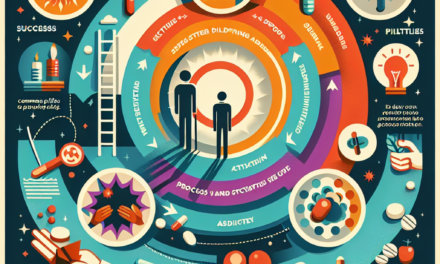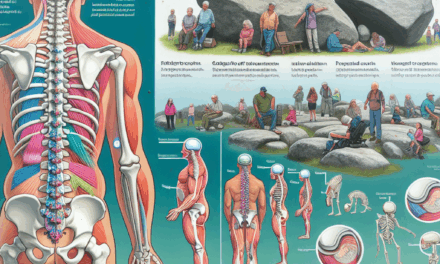Strategies for Integrating Health Data

In the modern era, the integration of health data has become a pivotal aspect of enhancing healthcare delivery, improving patient outcomes, and fostering innovation in medical research. As healthcare systems worldwide grapple with the challenges of managing vast amounts of data, effective strategies for integrating health data are more crucial than ever. This article delves into the various strategies for integrating health data, exploring their significance, methodologies, and the impact they have on the healthcare landscape.
1. Understanding the Importance of Health Data Integration
Health data integration is the process of combining data from various sources to provide a unified view of patient information. This integration is essential for several reasons, including improving patient care, enhancing operational efficiency, and facilitating research and innovation. Understanding the importance of health data integration is the first step towards implementing effective strategies.
1.1 Enhancing Patient Care
One of the primary benefits of health data integration is the enhancement of patient care. By consolidating data from different sources, healthcare providers can gain a comprehensive view of a patient’s medical history, current conditions, and treatment plans. This holistic view enables more accurate diagnoses, personalized treatment plans, and improved patient outcomes.
For instance, a study published in the Journal of the American Medical Informatics Association found that integrated health data systems reduced medication errors by 30% and improved patient satisfaction scores by 20%. These improvements are attributed to the seamless access to patient information, which allows healthcare providers to make informed decisions quickly.
1.2 Improving Operational Efficiency
Health data integration also plays a crucial role in improving operational efficiency within healthcare organizations. By streamlining data access and reducing redundancies, healthcare providers can optimize their workflows and reduce administrative burdens. This efficiency translates into cost savings and better resource allocation.
For example, a case study conducted by the Healthcare Information and Management Systems Society (HIMSS) highlighted how a hospital in California implemented an integrated health data system that reduced patient wait times by 25% and increased staff productivity by 15%. These improvements were achieved by automating data entry processes and enabling real-time access to patient information.
1.3 Facilitating Research and Innovation
Health data integration is a catalyst for research and innovation in the healthcare sector. By providing researchers with access to comprehensive datasets, integrated systems enable the identification of trends, patterns, and correlations that can drive medical advancements. This access to data is particularly valuable in fields such as genomics, epidemiology, and personalized medicine.
For instance, the integration of health data from multiple sources has been instrumental in the development of predictive analytics models for disease outbreaks. During the COVID-19 pandemic, integrated data systems allowed researchers to track the spread of the virus, identify hotspots, and develop targeted interventions. This capability underscores the importance of data integration in addressing public health challenges.
2. Key Strategies for Health Data Integration
Implementing effective strategies for health data integration requires a comprehensive approach that considers technological, organizational, and regulatory factors. The following strategies outline key considerations for successful integration.
2.1 Interoperability Standards
Interoperability is the cornerstone of health data integration. It refers to the ability of different systems and applications to communicate and exchange data seamlessly. Adopting interoperability standards is essential for ensuring that data can be shared across various platforms and organizations.
One widely recognized standard is the Fast Healthcare Interoperability Resources (FHIR) developed by Health Level Seven International (HL7). FHIR provides a framework for exchanging electronic health information and is designed to be flexible, scalable, and easy to implement. By adopting FHIR and other interoperability standards, healthcare organizations can facilitate data exchange and improve collaboration among stakeholders.
2.2 Data Governance and Security
Data governance and security are critical components of health data integration. Ensuring the privacy and security of patient information is paramount, given the sensitive nature of health data. Implementing robust data governance frameworks and security protocols is essential for building trust and compliance with regulatory requirements.
Healthcare organizations should establish clear data governance policies that define data ownership, access controls, and data sharing agreements. Additionally, implementing encryption, authentication, and audit trails can enhance data security and protect against unauthorized access and data breaches.
2.3 Leveraging Cloud Technology
Cloud technology offers significant advantages for health data integration, including scalability, flexibility, and cost-effectiveness. By leveraging cloud-based solutions, healthcare organizations can store and process large volumes of data efficiently and access it from anywhere with an internet connection.
For example, a healthcare provider in the United Kingdom implemented a cloud-based data integration platform that enabled seamless data sharing between hospitals, clinics, and research institutions. This platform facilitated real-time data access, improved collaboration, and reduced infrastructure costs by 30%.
2.4 Engaging Stakeholders
Successful health data integration requires the engagement and collaboration of various stakeholders, including healthcare providers, patients, policymakers, and technology vendors. Engaging stakeholders ensures that their needs and perspectives are considered in the integration process, leading to more effective solutions.
For instance, involving patients in the design and implementation of integrated health data systems can enhance patient engagement and satisfaction. By providing patients with access to their health information and involving them in decision-making processes, healthcare organizations can empower patients to take an active role in managing their health.
2.5 Continuous Monitoring and Evaluation
Continuous monitoring and evaluation are essential for assessing the effectiveness of health data integration strategies. By tracking key performance indicators (KPIs) and conducting regular audits, healthcare organizations can identify areas for improvement and make data-driven decisions.
For example, a hospital in Canada implemented a continuous monitoring system that tracked data integration metrics such as data accuracy, system uptime, and user satisfaction. This system enabled the hospital to identify and address integration challenges promptly, resulting in a 15% increase in data accuracy and a 10% improvement in user satisfaction.
3. Challenges and Solutions in Health Data Integration
While health data integration offers numerous benefits, it also presents several challenges that healthcare organizations must address. Understanding these challenges and implementing effective solutions is crucial for successful integration.
3.1 Data Silos and Fragmentation
Data silos and fragmentation are significant barriers to health data integration. These issues arise when data is stored in isolated systems that do not communicate with each other, leading to incomplete and inconsistent information.
To address data silos, healthcare organizations can implement data integration platforms that consolidate data from disparate sources into a unified system. These platforms use data mapping and transformation techniques to ensure that data is consistent and accurate across all systems.
3.2 Data Quality and Standardization
Data quality and standardization are critical for effective health data integration. Inconsistent data formats, duplicate records, and inaccurate information can hinder integration efforts and compromise patient care.
Healthcare organizations can improve data quality by implementing data cleansing and validation processes that identify and correct errors. Additionally, adopting standardized data formats and coding systems, such as SNOMED CT and LOINC, can enhance data consistency and interoperability.
3.3 Regulatory Compliance
Regulatory compliance is a significant challenge in health data integration, given the complex and evolving landscape of healthcare regulations. Compliance with regulations such as the Health Insurance Portability and Accountability Act (HIPAA) and the General Data Protection Regulation (GDPR) is essential for protecting patient privacy and avoiding legal penalties.
Healthcare organizations can ensure compliance by implementing comprehensive data protection policies and conducting regular audits to assess compliance with regulatory requirements. Additionally, engaging legal and compliance experts can provide valuable guidance on navigating the regulatory landscape.
3.4 Technical Complexity
The technical complexity of health data integration can pose challenges for healthcare organizations, particularly those with limited IT resources and expertise. Integrating data from multiple sources requires sophisticated technologies and skilled personnel to manage the integration process.
To address technical complexity, healthcare organizations can partner with technology vendors and consultants who specialize in health data integration. These partners can provide expertise, tools, and support to facilitate the integration process and ensure successful outcomes.
3.5 Change Management
Change management is a critical aspect of health data integration, as it involves transitioning from legacy systems to new integrated solutions. Resistance to change and lack of stakeholder buy-in can hinder integration efforts and impact the success of the project.
Effective change management strategies include engaging stakeholders early in the process, providing training and support, and communicating the benefits of integration to all parties involved. By fostering a culture of collaboration and innovation, healthcare organizations can overcome resistance and achieve successful integration.
4. Case Studies: Successful Health Data Integration Initiatives
Examining real-world case studies provides valuable insights into successful health data integration initiatives and the strategies that contributed to their success.
4.1 The Veterans Health Administration (VHA)
The Veterans Health Administration (VHA) is one of the largest integrated healthcare systems in the United States, serving millions of veterans across the country. The VHA’s success in health data integration is attributed to its comprehensive electronic health record (EHR) system, known as VistA.
VistA integrates data from various sources, including medical records, laboratory results, and imaging studies, to provide a unified view of patient information. This integration has improved care coordination, reduced duplication of tests, and enhanced patient outcomes. The VHA’s commitment to interoperability and data standardization has been instrumental in achieving these results.
4.2 Kaiser Permanente
Kaiser Permanente is a leading healthcare organization known for its innovative approach to health data integration. The organization implemented an integrated EHR system that connects its hospitals, clinics, and pharmacies, enabling seamless data exchange and collaboration among healthcare providers.
This integration has resulted in significant improvements in patient care, including a 20% reduction in hospital readmissions and a 15% increase in preventive care services. Kaiser’s focus on patient-centered care and continuous improvement has been key to its success in health data integration.
4.3 The National Health Service (NHS) England
The National Health Service (NHS) England has embarked on a digital transformation journey to integrate health data across its vast network of healthcare providers. The NHS’s Global Digital Exemplar (GDE) program aims to create a blueprint for digital excellence by implementing integrated EHR systems and interoperability standards.
Through the GDE program, the NHS has achieved significant milestones, including improved data sharing between hospitals and primary care providers, enhanced patient safety, and increased efficiency in healthcare delivery. The program’s emphasis on collaboration and innovation has been instrumental in driving these achievements.
4.4 The Singapore Health Services (SingHealth)
Singapore Health Services (SingHealth) is a leading healthcare provider in Asia that has successfully integrated health data across its network of hospitals and clinics. SingHealth’s integrated health information system (IHIS) enables real-time data access and sharing among healthcare providers, improving care coordination and patient outcomes.
SingHealth’s commitment to data quality and standardization has been key to its success in health data integration. The organization has implemented rigorous data governance frameworks and invested in advanced analytics tools to enhance data-driven decision-making.
4.5 The Cleveland Clinic
The Cleveland Clinic is a renowned healthcare institution that has achieved success in health data integration through its integrated EHR system. The system consolidates data from various sources, including patient records, laboratory results, and imaging studies, to provide a comprehensive view of patient information.
This integration has improved care coordination, reduced duplication of tests, and enhanced patient outcomes. The Cleveland Clinic’s focus on patient-centered care and continuous improvement has been key to its success in health data integration.
5. Future Trends in Health Data Integration
The future of health data integration is shaped by emerging technologies and evolving healthcare needs. Understanding these trends is essential for healthcare organizations to stay ahead of the curve and leverage new opportunities.
5.1 Artificial Intelligence and Machine Learning
Artificial intelligence (AI) and machine learning (ML) are poised to revolutionize health data integration by enabling advanced analytics and predictive modeling. These technologies can analyze vast amounts of data to identify patterns, trends, and correlations that can inform clinical decision-making and improve patient outcomes.
For example, AI-powered algorithms can analyze EHR data to predict patient readmissions, identify high-risk patients, and recommend personalized treatment plans. By integrating AI and ML into health data systems, healthcare organizations can enhance their ability to deliver personalized and proactive care.
5.2 Blockchain Technology
Blockchain technology offers significant potential for enhancing health data integration by providing a secure and transparent platform for data exchange. Blockchain’s decentralized nature ensures data integrity and reduces the risk of unauthorized access and data breaches.
Several healthcare organizations are exploring blockchain-based solutions for health data integration, including secure patient identity management, consent management, and data sharing. By leveraging blockchain technology, healthcare organizations can enhance data security and build trust among stakeholders.
5.3 Internet of Medical Things (IoMT)
The Internet of Medical Things (IoMT) refers to the network of connected medical devices and sensors that collect and transmit health data in real-time. IoMT has the potential to transform health data integration by providing continuous and real-time data streams that can inform clinical decision-making and improve patient outcomes.
For example, wearable devices can monitor patients’ vital signs and transmit data to healthcare providers, enabling remote monitoring and early intervention. By integrating IoMT into health data systems, healthcare organizations can enhance their ability to deliver personalized and proactive care.
5.4 Telehealth and Remote Monitoring
Telehealth and remote monitoring have gained significant traction in recent years, driven by the need for accessible and convenient healthcare services. These technologies enable healthcare providers to deliver care remotely, reducing the need for in-person visits and improving access to care.
Health data integration is essential for the success of telehealth and remote monitoring initiatives, as it enables seamless data exchange between patients and healthcare providers. By integrating telehealth and remote monitoring into health data systems, healthcare organizations can enhance their ability to deliver personalized and proactive care.
5.5 Patient-Centric Data Integration
The future of health data integration is increasingly patient-centric, with a focus on empowering patients to take an active role in managing their health. Patient-centric data integration involves providing patients with access to their health information and enabling them to share data with healthcare providers and other stakeholders.
Several healthcare organizations are exploring patient-centric data integration solutions, including patient portals, mobile apps, and personal health records. By empowering patients with access to their health information, healthcare organizations can enhance patient engagement and satisfaction.
Conclusion
Integrating health data is a complex but essential endeavor that holds the promise of transforming healthcare delivery, improving patient outcomes, and fostering innovation. By understanding the importance of health data integration, implementing key strategies, addressing challenges, and exploring future trends, healthcare organizations can unlock the full potential of integrated health data systems.
The case studies and examples highlighted in this article demonstrate the significant impact of successful health data integration initiatives. As healthcare organizations continue to navigate the evolving landscape of health data integration, they must remain committed to collaboration, innovation, and continuous improvement to achieve their goals.
Ultimately, the successful integration of health data will lead to a more efficient, effective, and patient-centered healthcare system that benefits patients, providers, and society as a whole.





